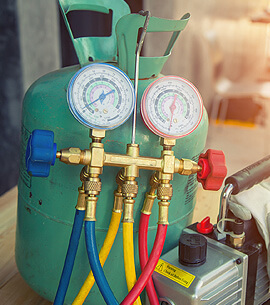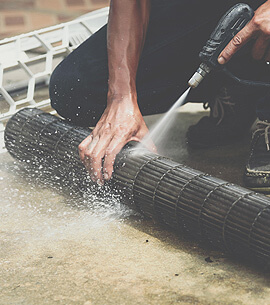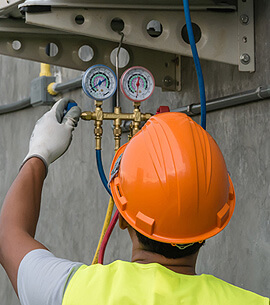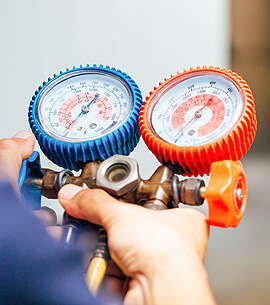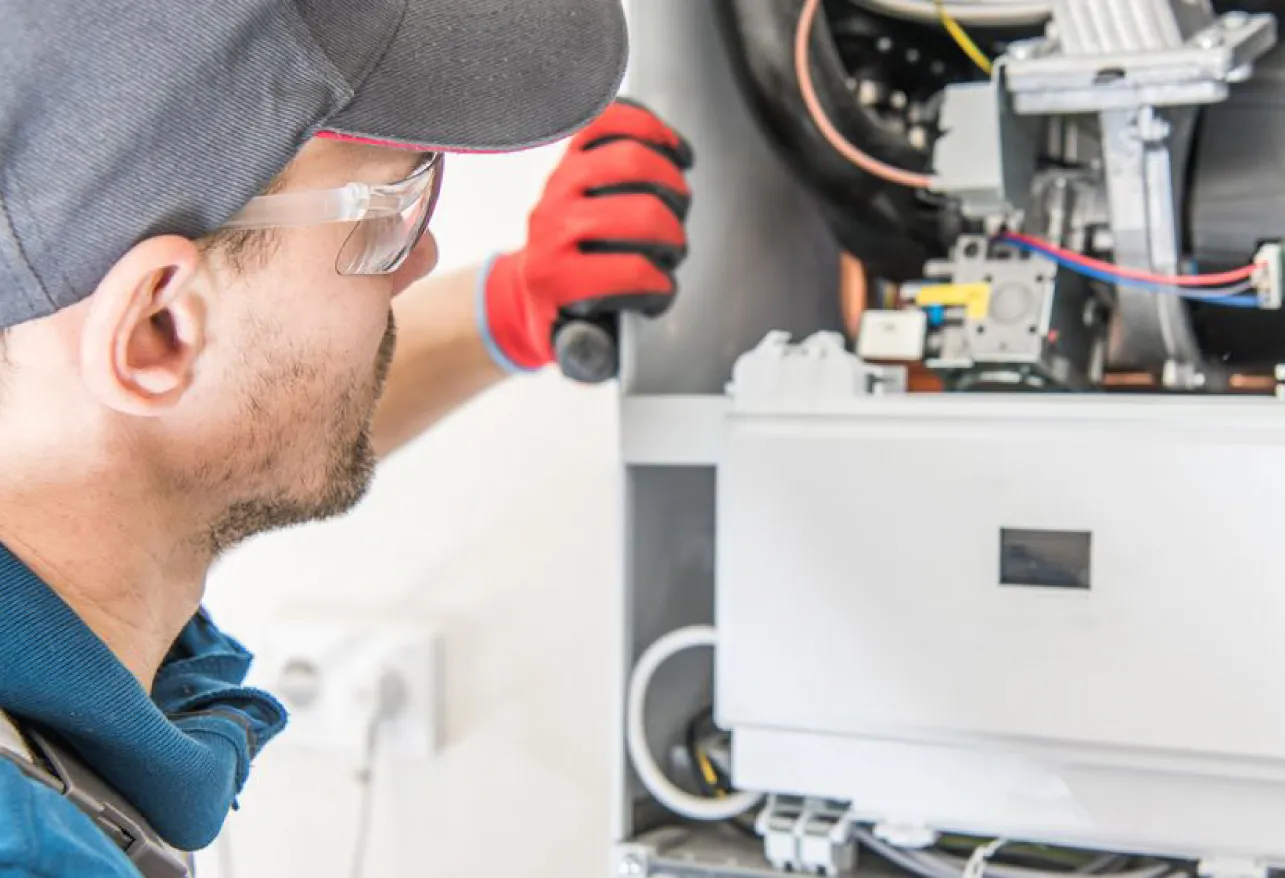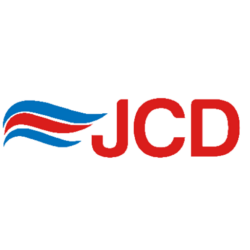Our team is available 24/7 for both heating and air-conditioning system repairs. Maintaining your family’s home comfort year-round is a top priority, which is why we provide regularly scheduled maintenance visits and same-day emergency repair service on your home heating and cooling system. We provide installation, repair and maintenance service for all brands and types of HVAC equipment.
- Diagnosis: The first step in heating repair is identifying the problem. This may involve inspecting the heating system, checking for unusual noises, smells, or malfunctions, and running diagnostic tests to pinpoint the issue.
- Repair or Replacement of Components: Depending on the nature of the problem, various components of the heating system may need repair or replacement. Common components include:
- Thermostat: If the thermostat is malfunctioning, it may need recalibration or replacement.
- Furnace or Boiler: Issues with the furnace or boiler, such as a malfunctioning pilot light, faulty ignition system, or damaged heat exchanger, may require repair by a qualified technician.
- Heat Pump: Problems with the heat pump, such as a refrigerant leak, compressor failure, or malfunctioning defrost cycle, may need to be addressed by an HVAC specialist.
- Ductwork: Leaks or blockages in the ductwork can reduce heating efficiency and may require sealing or repair.
- Cleaning and Maintenance: Regular cleaning and maintenance are essential for keeping heating systems running smoothly and efficiently. This may involve cleaning or replacing air filters, lubricating moving parts, inspecting and cleaning vents and ducts, and checking for any signs of wear or corrosion.
- Safety Checks: Heating repair should always include safety checks to ensure that the system is operating safely and efficiently. This may involve checking for gas leaks, testing carbon monoxide detectors, and verifying proper ventilation.
- Testing and Calibration: After completing repairs, the heating system should be tested and calibrated to ensure that it is functioning correctly. This may involve checking temperature settings, airflow, and overall system performance.
- Preventive Measures: In addition to repairing existing problems, heating repair may also involve implementing preventive measures to avoid future issues. This may include recommending regular maintenance schedules, installing programmable thermostats, or upgrading to more energy-efficient equipment.
Whether it’s a residential furnace or a commercial boiler system, prompt and effective heating repair is essential for maintaining comfort, safety, and energy efficiency in any building. It’s important to work with qualified and experienced heating repair professionals to diagnose and address issues promptly and effectively.
